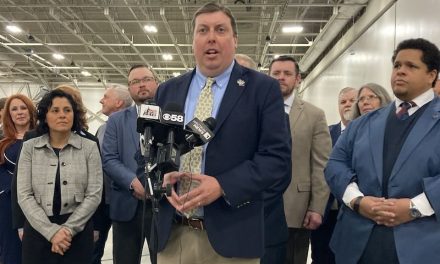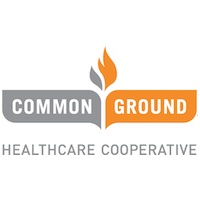
Wisconsin largely avoids rural hospital closures, but faces challenges

Wisconsin has largely avoided the rural hospital closures that other states have faced. But rural hospitals and communities still face a host of challenges, hospital groups say.
This week, the Chartis Center for Rural Health released a report cautioning that a dozen Wisconsin hospitals are vulnerable to closure. Three were considered “most vulnerable,” and nine were considered “at risk.”
The center declined to identify the hospitals. Billy Balfour, Chartis’ spokesman, said it’s the first time they’ve taken a deep dive into hospital vulnerability.
Between the start of 2010 to the end of last year, 120 rural hospitals closed in the United States, with 19 shuttering in 2019, according to the report.
Texas, Tennessee, Oklahoma, Georgia, Alabama and Missouri saw the largest number of rural hospital closures in the last decade.
In Wisconsin, one rural hospital closed during that period. Franciscan Skemp, part of Mayo Clinic Health System, shuttered
its Arcadia hospital in 2011 and built a clinic in the city instead.
Tim Size, executive director of the Rural Wisconsin Health Cooperative, said some rural hospitals are struggling in Wisconsin. He’s not aware of any at “imminent threat” of closing.
“I see what’s going on in the country, and sooner or later, that wave comes to Wisconsin,” he said. “I just don’t believe that it’s come yet. I don’t want people to be unduly panicked in Wisconsin. On the other hand, I think we have to understand there’s something going on.”
Size noted that he has concerns about the report. For instance, the authors classified Wisconsin as a non-Medicaid expansion state even though it did a partial expansion of the program. “We probably don’t fit readily into their analysis,” he said.
Balfour of Chartis said they used the Kaiser Family Foundation for tracking the states that are expanding and aren’t. He noted that expansion was one of nine variables that proved statistically relevant in the model.
Size said the report says more about the challenges facing the “rural ecosystem” than individual hospitals.
Some of those challenges have to do with healthcare reimbursement, as rural patients are less likely to be covered by private insurance. That leaves hospitals more vulnerable to government payers that cover less than the full share of costs, according to Size.
There’s also potential for insurers to steer patients away from rural communities, Size noted. Rural hospitals are more at risk for bad debt from patients with high-deductible plans, he added.
Rural hospitals are also the safety net for the community and don’t have the option to cut services if they lose money, he said.
“We need more reasonable reimbursement from the federal government around Medicare because that is the big payer for rural,” Size said. “If they’re not paying their share of the cost, then that’s a problem.”
Rural communities face ongoing shortages of providers. On top of that, there are barriers to recruitment to rural Wisconsin, like a lack of affordable housing and child care.
Rural Wisconsin has also been slow to recover from the Great Recession compared to the rest of the state. And counties have seen their populations drop, Size noted.
“We need to rebuild the rural economy,” he said. “We need to get better at getting people into Wisconsin as a whole and into rural Wisconsin. We have some major systems problems, and it cuts across health and the rest of our economy and social network.”
Wisconsin Hospital Association CEO Eric Borgerding said that the rural hospital closure makes Wisconsin a “bit of an anomaly” compared to other states.
“While we clearly have challenges that we know and we have to address and keep working to address, so far, I think we’ve done a relatively good job of assisting our rural hospitals and our rural health systems,” he said.
He said that work has helped “blunt” some of the trends that other states have faced. But he said that doesn’t mean the state is OK, noting that there are rural hospitals operating in the red, demographic changes, and outmigration from rural areas.
He said that WHA collaborates with the Rural Wisconsin Health Cooperative on public policy, including lobbying on Medicare reimbursement and protecting and preserving the critical access hospital program.
They’ve also pushed for increased funding for state programs, like increasing money for disproportionate share hospital payments and the rural critical care hospital supplement program.
“Wisconsin has been able to use public policy very effectively,” he said. “The things that we get passed and enacted are very targeted and very impactful and they do move that needle. But I also want to say that we are blessed in this state to have some incredible hospital and health system leaders.”
Other efforts have targeted the workforce. Borgerding said Wisconsin has worked on expanding healthcare professional training programs and knocking down barriers to allow providers to practice at the top of their license.
And Borgerding said they’re also focused on how to support non-healthcare sectors in rural areas, looking at ways to boost rural economic development like broadband expansion and affordable housing.
He cautioned that this is a long-term project for addressing the rural challenges and that the state is not “out of the woods.”
“We’re not waiting for the rural hospital crisis to befall our state, we are working hard to get in front of and prevent it,” Borgerding said. “Whether we can do that or not, only time and sound public policy will with certainty tell.”
This article first appeared in the Wisconsin Health News daily email newsletter. Sign up for your free trial here.







.jpg?bwg=1612548324)























